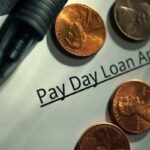Only one state does not have student loan forgiveness programs
To afford higher education in the United States you will likely need to borrow a student loan. This is true regardless of where you are enrolled. Students who are pursuing the same degree can owe more student loans than those in other states.
However, no matter where you live in the country, there are many student loan forgiveness programs available that can help graduates who have difficulty paying off their debt.
Understanding student loan debt forgiveness
When a borrower applies for a federal loan or private second chance car loan to pay higher education costs, student debt refers to what they owe. This can include tuition, textbooks and other school supplies as well as basic living expenses. In total, $1.5 trillion was owed by Americans to student loans as of December 2021. This figure is more than the combined gross domestic product (GDP), of all but 10 nations in 2020. Even after accounting for possible scholarships and parental financial assistance, most people will still require a loan. In the future, larger amounts may be needed because of rising costs for education.
Over 45 million Americans are saddled with student debt. There are many reasons that a borrower might not be able to repay the loan. A default on a loan can lead to delinquency and a credit score and credit report that will be affected for a long time. Even if a borrower is able to pay their loan on time, it can make it difficult to save money for larger purchases or an emergency fund.
There are programs that provide student loan forgiveness for graduates who cannot manage their debt. The federal government offers student loan forgiveness to all who meet the criteria, regardless of where they live in the U.S. Individual state governments may have their own programs for debt cancellation. Below is our analysis on how student loan forgiveness and balances differed from one state to the next in 2020.
Read More: https://www.loanwant.co.uk/student-loan
Student loan debt by state
The Institute for College Access & Success reported that 19 states had an average debt of more $30,000 in 2020. Six states, however, reported average amounts exceeding $35,000. As in previous years, many of the same states were at both the lower and higher ends of this range. The Northeast remained the most heavily populated state with higher student debt levels, while the West was home to the West with lower student debt.
New Hampshire’s average student debt burden was $39,950. Utah, however, had the lowest average student debt burden at $18,350. It was also the only state that had a figure lower than $20,000.
The percentage of students with student debt is another indicator of loan burden. According to the same report, 73% of South Dakota’s graduates had student loan debt for the 2019-2020 academic year. This is the highest number in the U.S. Utah, with 39%, had the lowest student loan debt percentage for the same period.
North Dakota’s private student loan utilization rate was 27%, which is two percentage points higher than New Hampshire’s. This is despite 66% of North Dakota’s borrowers having student loan debt, while 70% live in the Granite State. Though Utah did have the lowest rate of nonfederal debt utilization at 3%, Nevada was just one percentage point behind it, even though the latter state had a seven-percentage-point-higher rate of graduates who owed student loans.
Also Read: https://www.loanloving.com/student-loan
Although it is not a state in the US, the District of Columbia’s average total on-campus attendance cost was $59,233 in 2020. Massachusetts, with $44,683, had the second-highest overall average total cost of attendance and the highest at $44,683. Idaho had the lowest cost of attendance at $14,748. Vermont also had the highest tuition and fees, at $31,764, which accounts for 72.%. Wyoming’s tuition and fees of $4,747 accounted for just 31.%.
Finally, by subtracting each state’s average cost of attendance from its average student loan debt, it is possible to see which areas of the U.S. offer more student aid than required. You can use the excess cash to pay for off-campus living expenses and debt repayment after graduation.
27 states have higher attendance costs than the average graduate debt. After accounting for costs of attendance, the average North Dakota student loan debt was $12,592. Students in the District of Columbia, however, will need to spend far more than their average student loan amount of -$27194 after accounting for tuition costs.
State Student Loan Forgiveness
At least one program for student loan forgiveness is offered in 48 states and District of Columbia as of September 2021. The U.S. has 130 state-level student debt cancellation programs. Minnesota boasts 15 student loan forgiveness programmes, which is the most of any state. Mississippi and North Dakota have no student debt cancellation programs.
Many education loan forgiveness programs are intended to assist borrowers in certain professions to increase the number of students interested in the same career paths. This allows the state to attract multiple types of workers into its local economy. A state may offer more than one program. There will be variations in the programs that relate to the same career because economic conditions can vary from one state to another. These are the areas that can vary the most between programs.
Never Miss: https://www.basicloan.us/what-is-borrower-defense/
The amount: There are many U.S. state programs that allow for forgiveness of educational debt. It can range from thousands to thousands of dollars. Depending on the applicant, there are different amounts of debt forgiveness offered by some debt cancellation programs. For example, the Florida Nursing Student Loan Forgiveness Program offers a flat rate at $4,000 per annum. The Kentucky State Loan Repayment Program has three “tiers” ($20,000, $40,000 and $80,000), depending on the borrower’s chosen profession.
Eligibility: Every student loan forgiveness program has specific criteria that borrowers must fulfill to be eligible for debt forgiveness. At a minimum, applicants must be citizens of the U.S. or the applicable state. They also need to have no outstanding education debt and be working in the requested profession. For example, the Massachusetts Loan Repayment Program for Health Professionals (MLRP), is open to a broad range of healthcare workers. However, Missouri’s Health Professional Nursing Student Loans program, however, is only available to nurses.
16 Additional requirements may also be necessary. For example, the Delaware State Loan Repayment Program, (SLRP), requires that applicants have education loans in default. The opposite applies for the California Dental Association Foundation Student Loan Repayment Grant.18
Process and cycle of application: There is no standard process for applying for state loan forgiveness programs. Not all states offer online applications. Some states require that you email the person involved in the program. There are many requirements for information and/or documentation. There is not a single application process. Applications are accepted for the Hawaii State Loan Repayment Program until May 20, 2022. Rhode Island’s Wavemaker Fellowship is currently closed.20
Federal loan forgiveness options can be available to U.S citizens from any part of the nation, but state programs are worth investigating, regardless if a borrower are a student or a graduate trying to choose which school to attend. Certain programs were created to help attract workers in highly-sought-after areas within a state. Iowa’s Health Professional Recruitment Program, for instance, was created to increase the number and quality of physicians, physical therapists, doctors, physician assistants, athletic trainers, podiatrists and podiatrists in high-need areas.






